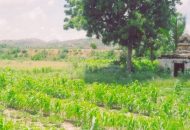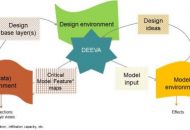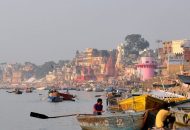Month: November 2018
-
Modeling as social practice
Modeling – the creation of simplified or abstract representations of the world – is something that people do in many different ways and for many different reasons, and is a social practice. This is true even in the case of scientific and computational models that don’t meet the specific criteria of “participatory” or “collaborative.” Scientists and modelers interact with one another, share information, critique and help to refine one another’s work, and much more as they build models.
-
Why participatory models need to include cultural models
One approach that has not been used to help translate and disseminate participatory models to non-modelers and non-scientists is something psychologists and anthropologists call "cultural models." Cultural models are presupposed, taken-for-granted understandings of the world that are shared by a group of people.
-
Reinventing science? From open source to open science
The original ideals of scientific pursuit of truth for the sake of the betterment of humanity are diluted and forfeited in the exhausting race for grants, tenure, patents, citations and nominations. Something has to change, especially in the era of post-normal science when so much is at stake, and so little is actually done to address the mounting problems of the environment and society.
-
Modelling is the language of scientific discovery
Whether modeling the social interactions of individuals within a community in anthropology, the trade-offs of foraging behaviors in ecology, or the influence of warming ocean temperatures on circulation patterns in oceanography, the ability to represent empirical or theoretical understanding through modeling provides scientists with a semi-standardized language to explain how we think the world works.
-
Modeling as empowerment
Who can make systems change? The challenges of complexity are intensely felt by those who are trying to make strategic interventions in coupled human-environmental systems in order to fulfill personal, societal, or institutional goals.
-
Participatory modeling: an ideal place for interdisciplinarity?
Instead of accumulating and overlaying concepts, modeling can play a unique role in promoting interdisciplinarity. The model, gradually co-designed, becomes a mediation object that allows the participants to exchange viewpoints on the issue at hand and also to revise their own knowledge.
-
Facilitating Participatory Modeling
Like many practices in life, there is an art and a science to facilitation.
-
Participatory Modeling in My village: E. Palaguttapalli
E. Palagutapalli was a thriving agricultural village for several decades. During 1980s and 1990s, its farmers shifted to commercially profitable and water intensive sugarcane cultivation. However, since the year 2001, the water bodies and wells in this village have dried up almost completely leading to a collapse of agriculture.
-
Design and Calculate
The project aims at further development of the Design Evaluation Tool, a proof of concept of which was developed in 2017.
-
Strategic Basin Planning in Ganga River Basin, India
The participatory development of a strategic basin plan for Ganga river basin in India. Participatory modelling is used to improve the health of the Ganga river while maintaining an acceptable level of economic productivity. An exemplary case of modelling with stakeholders in complex river basins.









